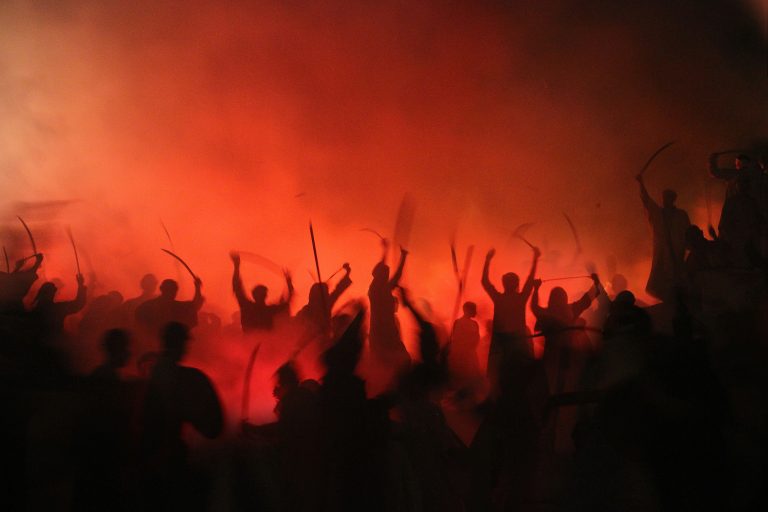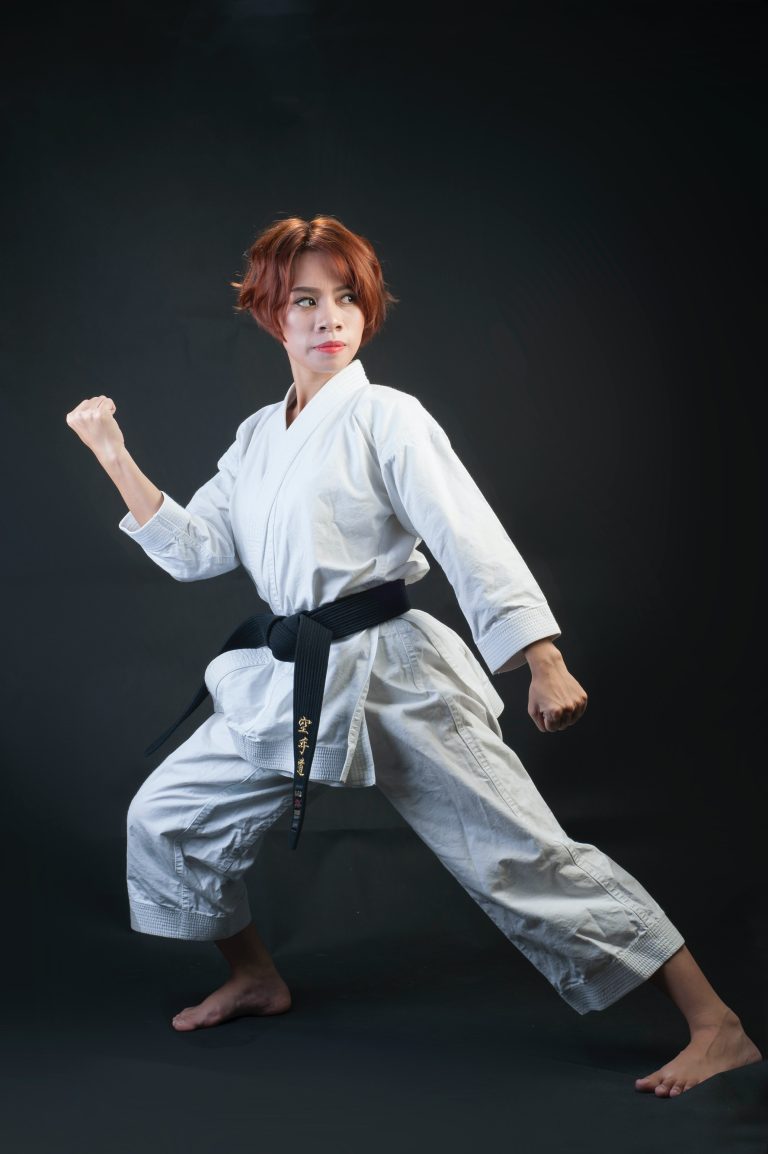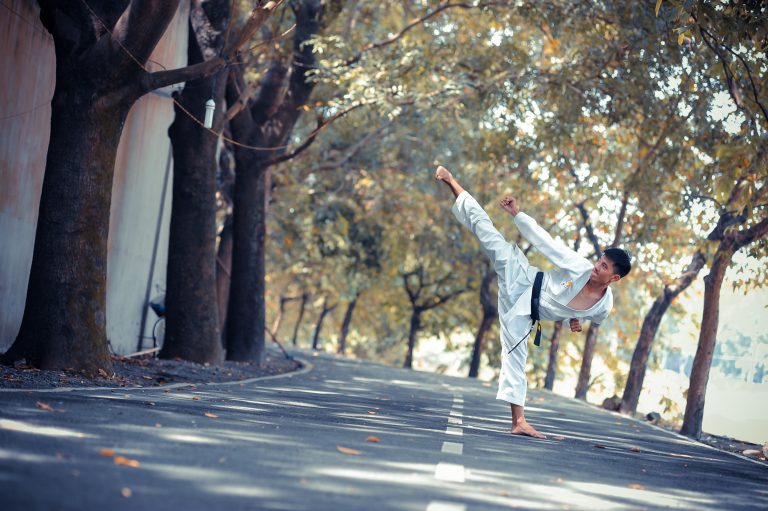What Does the Word Karate Mean in Japanese?
Karate is a popular martial art that originated in Japan. The word „karate“ is Japanese, and it means „empty hands.“ The term is used to describe a form of martial arts that focuses on striking, punching, and kicking techniques that use no weapons.
In this blog post, we will explore the meaning of the word „karate“ in more detail, its history, and how it has evolved over time.
The Origin of the Word „Karate“
The word „karate“ is derived from two Japanese words: „kara“ and „te.“ „Kara“ means „empty,“ while „te“ means „hands.“ The term „karate“ was first used in Okinawa, Japan, during the late 1800s. It was originally written in Chinese characters, which were later translated into Japanese characters.
At the time, Okinawa was a hub of trade between China, Japan, and other surrounding countries, where various fighting techniques were practiced. It was during this time when Okinawans began incorporating techniques from Chinese martial arts into their own practices.
The term „karate“ was first used by one of the founders of modern-day karate, Gichin Funakoshi. He used the term to describe the style of martial arts that he taught. Funakoshi’s style of karate was based on the Chinese martial art of Shaolin Kung Fu, which he learned during his travels to China.
The History of Karate
Karate has a long and rich history in Japan, dating back several hundred years. The earliest roots of karate can be traced back to the Ryukyu Islands, which are located in the southernmost part of Japan. Okinawa, the largest island in the Ryukyu chain, was the birthplace of modern-day karate.
The people of Okinawa were skilled in various forms of martial arts, including te, which was a precursor to karate. Te was a hand-to-hand combat system that was used by Okinawan peasants to defend themselves against armed samurai warriors. The techniques used in te were simple but effective, and they relied on quick strikes, kicks, and blocks.
Over time, te evolved and became known as karate. The early practitioners of karate were primarily members of the Okinawan aristocracy, who trained in secret. It wasn’t until the late 19th century that karate became more widespread and accessible to the general public.
The Different Styles of Karate
Today, there are several different styles of karate that are practiced throughout Japan and the rest of the world. Each style has its own unique set of characteristics, techniques, and training methods.
Some of the most popular styles of karate include Shotokan Karate, Goju-Ryu Karate, and Kyokushin Karate. Shotokan Karate is known for its powerful and dynamic techniques, while Goju-Ryu Karate focuses on building strength and endurance through rigorous training. Kyokushin Karate is known for its full-contact sparring and emphasis on striking power.
The Evolution of Karate
Over the years, karate has evolved and changed in numerous ways. In the early days of karate, the focus was on practical self-defense techniques that could be used on the streets. Today, while self-defense is still an important aspect of karate, it has also evolved into a competitive sport.
In addition to becoming a sport, karate has also become a form of exercise and a way for people to improve their physical fitness and overall well-being. Many people practice karate to improve their strength, flexibility, and balance, as well as to reduce stress and improve their mental focus.
What Does the Word Karate Mean in Japanese?
Karate, the popular martial art, originated in Okinawa, Japan. The word „karate“ is made up of two Japanese Kanji characters: „kara“ meaning „empty“ or „open“ and „te“ meaning „hand.“ Together, „karate“ means „empty hand.“
This term refers to the martial art’s emphasis on attacking and defending oneself without weapons, solely using the hands and feet. Karate is a form of self-defense that requires discipline, respect, and strict adherence to traditional techniques and etiquette.
What are the Origins of Karate?
Karate is a combination of traditional Okinawan martial arts and Chinese martial arts. It was brought to Japan in the early 20th century, where it evolved into the modern martial art, we know today.
The roots of Karate can be traced back to the Ryukyu Kingdom, which was located in what is now Okinawa, Japan. During this time, Okinawan citizens were forbidden to carry weapons by the Japanese samurai, so they developed unique martial arts that utilized their fists, feet, hips, and knees as a form of self-defense.
What are the Key Principles of Karate?
One of the key principles of karate is discipline, which is an essential element in the practice of this martial art. Karate demands a strict code of conduct, and practitioners must show respect for their teachers as well as for their fellow students.
Karate also emphasizes the importance of developing a strong spirit and maintaining a positive attitude. The principle of „osu,“ which means to persevere and never give up, is a core principle in karate training.
Another principle of karate is „kata,“ which refers to a series of pre-arranged movements performed in a specific order. Kata trains the practitioner’s muscle memory, helps them perfect their techniques, and prepares them for actual combat situations.
Is Karate Effective for Self-Defense?
Karate is an effective form of self-defense that emphasizes rapid strikes and movements, joint locks, throws, and pressure points. However, the effectiveness of karate as a self-defense method depends on the level of training of the practitioner.
When practiced correctly and with dedication, karate can be an effective form of self-defense. Still, it is crucial to remember that attending a few karate classes does not make one a proficient self-defense expert. It takes years of practice and training to be able to use karate skills effectively in real-life situations.
What are Some Styles of Karate?
There are many different styles of karate, each with its unique characteristics and techniques. The most popular karate styles include Shotokan, Goju-Ryu, Wado-Ryu, and Shito-Ryu.
Shotokan karate is known for its focus on powerful, linear movements and strong stances, while Goju-Ryu emphasizes circular movements and close-in fighting techniques. Wado-Ryu karate is a more fluid style that focuses on balance and the use of the short strikes, and Shito-Ryu combines elements of both Shotokan and Goju-Ryu.
What Does the Word Karate Mean in Japanese?
Karate is a martial art that originated in Okinawa, Japan, and is now practiced worldwide. This sport is recognized for its striking techniques that include punches, kicks, knee strikes, elbow strikes, and open-hand techniques. The word karate itself holds a significant meaning, deriving from the Japanese language. In this blog post, we will decode the meaning of the word karate in Japanese.
Step 1: Breaking Down the Word Karate
The word ‚Karate‘ is composed of two characters: ‚kara‘ and ‚te.‘ The character ‚kara‘ means ‚empty‘, and ‚te‘ means ‚hand‘. When combined, ‚kara-te‘ refers to empty-handed self-defense.
Step 2: The History of Karate
Karate evolved out of the need for unarmed self-defense among Okinawan peasants who were prohibited from bearing arms under the rule of the Ryukyu Kingdom. With the island located between China and Japan, it had the opportunity to absorb aspects of their culture, including martial arts. Over the years, the martial art evolved, and new techniques and styles were added to the original version of Okinawan karate.
Step 3: Karate as a Sport
Today, karate is widely practiced worldwide as a sport, and in 2020, it was officially added to the Olympic Games. Karate involves sparring with an opponent, demonstration of forms (kata), and board breaking. It is also an excellent form of physical exercise and a stress reliever.
Step 4: Types of Karate
Over time, different karate styles were developed, namely Shotokan, Goju-Ryu, Wado-Ryu, and Shito-Ryu. These styles vary in techniques, stances, and forms, but they all utilize the same basic principles of karate, which are discipline, respect, and control.
Step 5: The Philosophy of Karate
Karate is not just a martial art but also a philosophy of life. The focus is not just on physical strength but also on developing inner strength and character. Practitioners of karate learn the importance of respect, discipline, perseverance, and humility in their daily lives.
Conclusion
In summary, the word karate in Japanese means empty-handed self-defense. Karate originated in Okinawa and has since evolved into several different styles with the same underlying principles of discipline, respect, and control. Karate is a great form of physical exercise and a way to develop inner strength and character. Whether you are new to karate or a seasoned practitioner, understanding the origins and meaning of this martial art can help deepen your appreciation and respect for it.
Inhaltsverzeichnis






